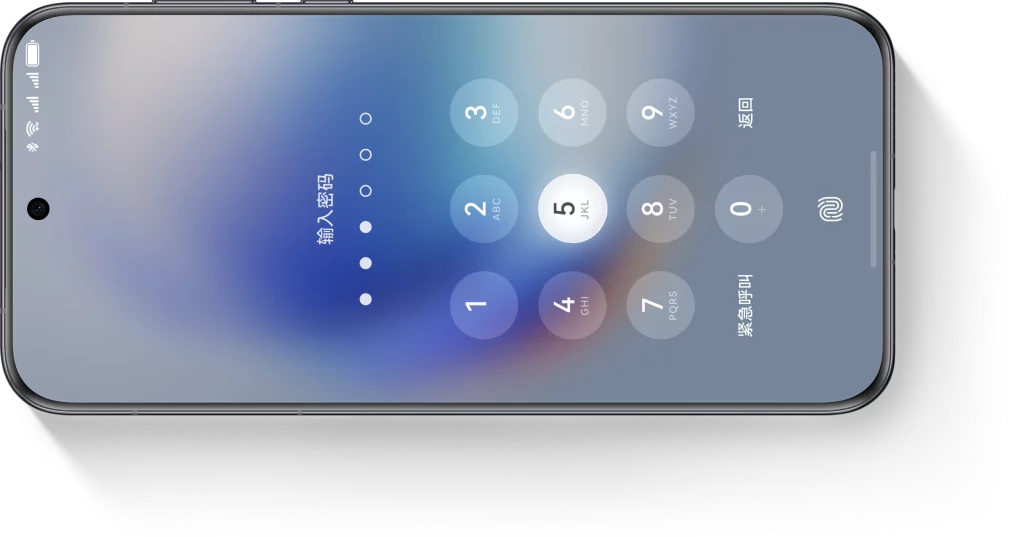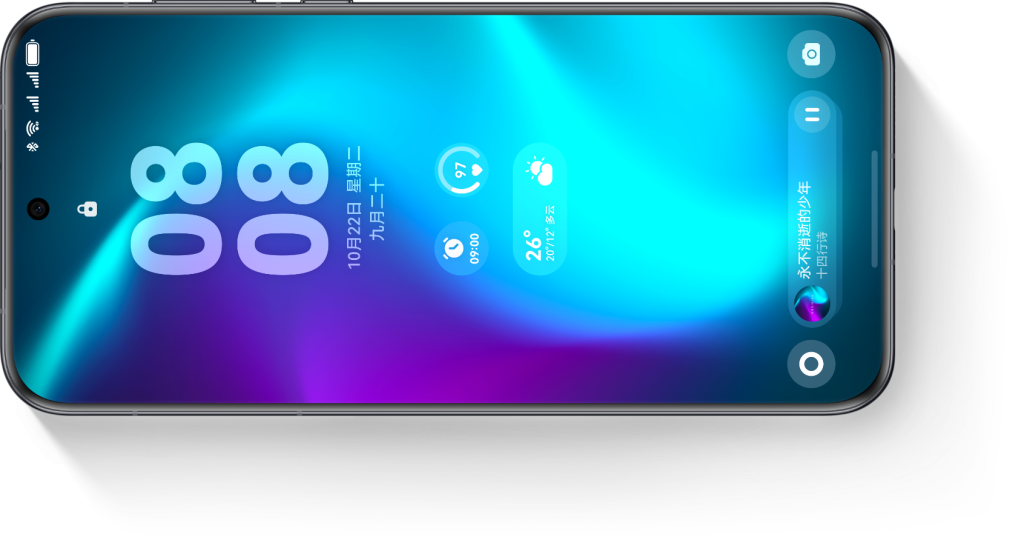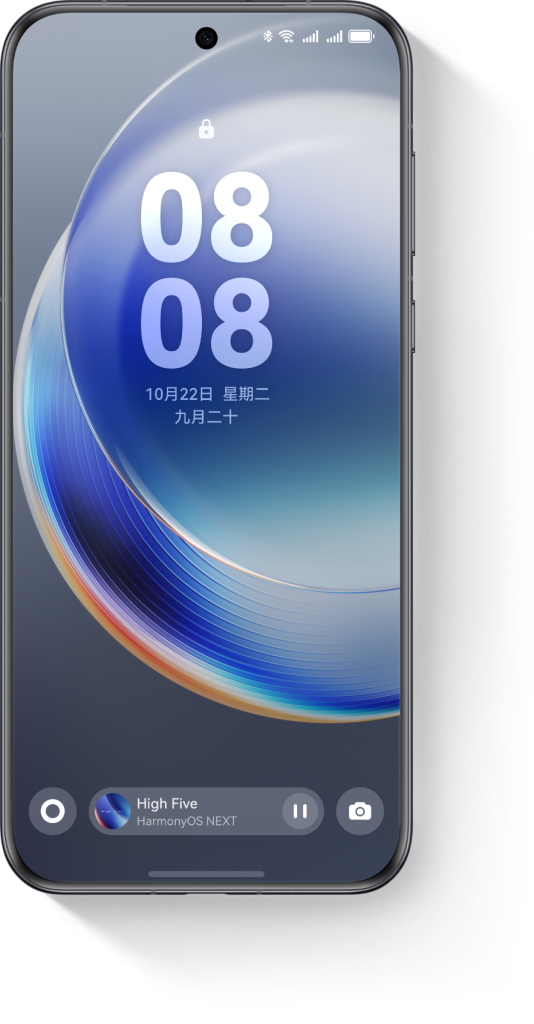Huawei introduces HarmonyOS 5. This operating system marks a key milestone, embodying the vision of a connected future and responding to strategic challenges. HarmonyOS 5 aims to unify numerous devices, promising a seamless user experience.
Why Did Huawei Create HarmonyOS?
Huawei faced restrictions that limited its access to Android. Consequently, the company accelerated the development of its own OS. HarmonyOS is not just an alternative; it represents a long-term vision. Huawei is targeting the “Internet of Everything” (IoE), a future where all devices interact. HarmonyOS initially focused on the IoT and then evolved rapidly. It now powers smartphones, tablets, and watches. PCs and cars also use it. This ambition demonstrates a desire for autonomy.

HarmonyOS NEXT: A Strategic Break
HarmonyOS NEXT is the foundation of HarmonyOS 5. It marks a significant break, as it abandons Android AOSP compatibility. Huawei presents it as a “pure” system, developed natively by the company. Therefore, there is no longer any dependency on Android code. This complete control is an advantage. However, building an ecosystem of native apps is a challenge. Huawei seems determined on this path. Success will depend on the appeal of the applications.
New User Interface: Smoother, More Personal
HarmonyOS 5 transforms the visual experience. Indeed, Huawei offers a refreshed interface. Users discover more options; for example, they can customize the lock screen. The home screen also becomes more modular. Additionally, the control center is evolving, with greatly improved ergonomics. Huawei has paid particular attention to fluidity. Thus, animations are faster, and applications launch more quickly. The Ark graphics engine optimizes these aspects, ensuring superior visual rendering. On PC, multitasking is enhanced, windows adjust easily, and the taskbar is customizable.

Artificial Intelligence at the Heart of HarmonyOS 5
AI is a pillar of HarmonyOS 5. The system integrates a native AI that uses Huawei’s Pangu model. The Celia assistant is its manifestation. On PC, Celia offers numerous functions. It translates documents into 21 languages and creates summaries and reports. Celia understands voice, text, and images, and also analyzes on-screen content. For professionals, Celia assists in meetings, providing real-time summaries. The AI aims for “full-scenario intelligence.”
Increased Performance and Energy Efficiency
Huawei announces improved performance. HarmonyOS 5 is said to be 30% smoother, with energy consumption reduced by 20%. The “Deterministic Latency Engine” contributes to this, reducing response latency by 30%. HarmonyOS NEXT reportedly has 40% less code, which would improve battery life and performance. Even less powerful chips would benefit. Huawei’s control over both hardware and software is reminiscent of Apple’s approach.

Technical Architecture: The Innovative Microkernel
The architecture of HarmonyOS 5 is distinctive. HarmonyOS NEXT uses a proprietary microkernel, whereas Android relies on the monolithic Linux kernel. This choice offers more modularity, allowing the system to adapt to various devices, from small connected objects to PCs. Resource management is improved, and security is also strengthened through the isolation of critical components. The system is organized in layers, which facilitates development and maintenance.
Enhanced Security: The Star Shield Approach
Security is paramount for HarmonyOS 5. Huawei has introduced the “Star Shield” architecture, which offers comprehensive system protection. Component isolation is a cornerstone. The system integrates a Trusted Execution Environment (TEE). This hardware-based TEE protects sensitive data, such as biometric information. Huawei also verifies developers, and the AppGallery digitally signs applications. HarmonyOS NEXT has removed unnecessary permissions, which strengthens privacy protection.
DSoftBus: Towards a Connected “Super Device” Ecosystem
The DSoftBus technology brings the connected vision to life. It is a software communication foundation that integrates separate devices, allowing them to function as a virtual “Super Device.” Users can easily share data and control one device from another. Applications can collaborate across devices. For example, a task started on a smartphone can be continued on a tablet. The “Service Collaboration Kit” (SCK) facilitates this. A tablet can use the smartphone’s camera. “Meta Services” also illustrate this capability.
Which Devices Are Compatible with HarmonyOS 5?
Many Huawei devices support HarmonyOS 5. The Pura and Mate smartphone series are included, such as the Pura 70 and Mate 60, as well as the Mate X5 foldable models. Nova series is also eligible. The MatePad Pro and Air tablets are compatible. Watches like the Huawei Watch GT 5 are receiving betas. Huawei even plans to update older models; the P30 and Mate 20 could receive HarmonyOS NEXT.
HarmonyOS 5 Arrives on Huawei PCs
Huawei’s ambition extends to PCs. The company is launching laptops running HarmonyOS 5. The “Ultimate Design” model is one example. This launch coincides with the expiration of Windows licenses. These PCs integrate into the global ecosystem, benefiting from the Celia assistant and native application support. A Kirin X90 processor could power them. HarmonyOS on PC is a step towards the “Super Device.”
Deployment: China First, the World Next?
The rollout of HarmonyOS 5 is progressive in China. It began with developer betas, followed by public betas. Official launches came next. For example, the public beta for HarmonyOS NEXT 5 started on October 22, 2024, with the commercial launch on October 23, 2024. Internationally, HarmonyOS 5 remains limited to China. Observers are cautious. However, Huawei is preparing for a launch in certain countries in 2025. Pilots in the Middle East and Latin America have been mentioned.
HarmonyOS 5 vs. Android and iOS: The Duel
HarmonyOS 5 positions itself against Android and iOS. Its distributed microkernel architecture is an asset, promoting the interconnection of devices. Huawei claims superior fluidity, aided by hardware/software optimization. Security is also a strong point, evidenced by the Star Shield architecture. However, the application ecosystem remains a challenge, as it is less extensive than those of Android or iOS.
The Crucial Challenge of the Application Ecosystem
Building a robust application ecosystem is vital, especially outside of China. HarmonyOS NEXT abandons Android compatibility, so Huawei is betting on native applications. Huawei’s AppGallery is growing, with the company announcing over 2.54 million developers and more than 15,000 available apps and services. The top 5,000 Chinese applications are said to be supported. For international users, third-party stores provide access to popular apps, but gaps remain, particularly for banking or streaming services.
Developing for HarmonyOS 5: Tools and Languages
Huawei encourages native development and provides developers with tools to do so. The ArkTS language, based on TypeScript, is part of this, used with the ArkUI framework. The native testing framework, Cangjie, is notable. It helps ensure code quality and includes three main modules: a unit testing framework, a mocking framework, and a performance testing framework. These tools aim to create robust applications.
User Feedback: What Users Are Saying
Initial feedback on HarmonyOS NEXT is often positive. The fluidity and responsiveness are praised. Some testers find the experience very pleasant, noting fluidity that is sometimes superior to iOS. On PC, the interface is described as “sci-fi.” The AI and inter-device integration are assets. For watches, the interface is called “magnificent.” However, occasional slowdowns exist. The library of third-party apps is limited in the West, and the lack of specific applications remains a concern.
The Future of HarmonyOS: Ambitions and Obstacles
Huawei aims to make HarmonyOS a global player, with the goal of becoming the third major mobile OS. A target is to exceed 100,000 native applications by 2025. Ambitions also extend to industry and smart cities. The “China First” strategy currently dominates, consolidating the local base. For international markets, expansion will be gradual, with pilots being considered. The main challenge remains the global application ecosystem. Convincing international developers is difficult, and the geopolitical context is also a hindrance.
Conclusion: HarmonyOS 5, A Bold Gamble
HarmonyOS 5, especially with NEXT, is a crucial step. It symbolizes Huawei’s quest for independence. Its technical architecture is innovative, with the microkernel and DSoftBus as prime examples. AI is deeply integrated. These strengths show a long-term vision. However, the global application ecosystem is a challenge. Closing the gap with Android and iOS will be a long process. Geopolitical obstacles persist. HarmonyOS 5 tests Huawei’s resilience. Its potential is real, especially in China. Its global success will depend on many factors. It could stimulate innovation in the market.3







